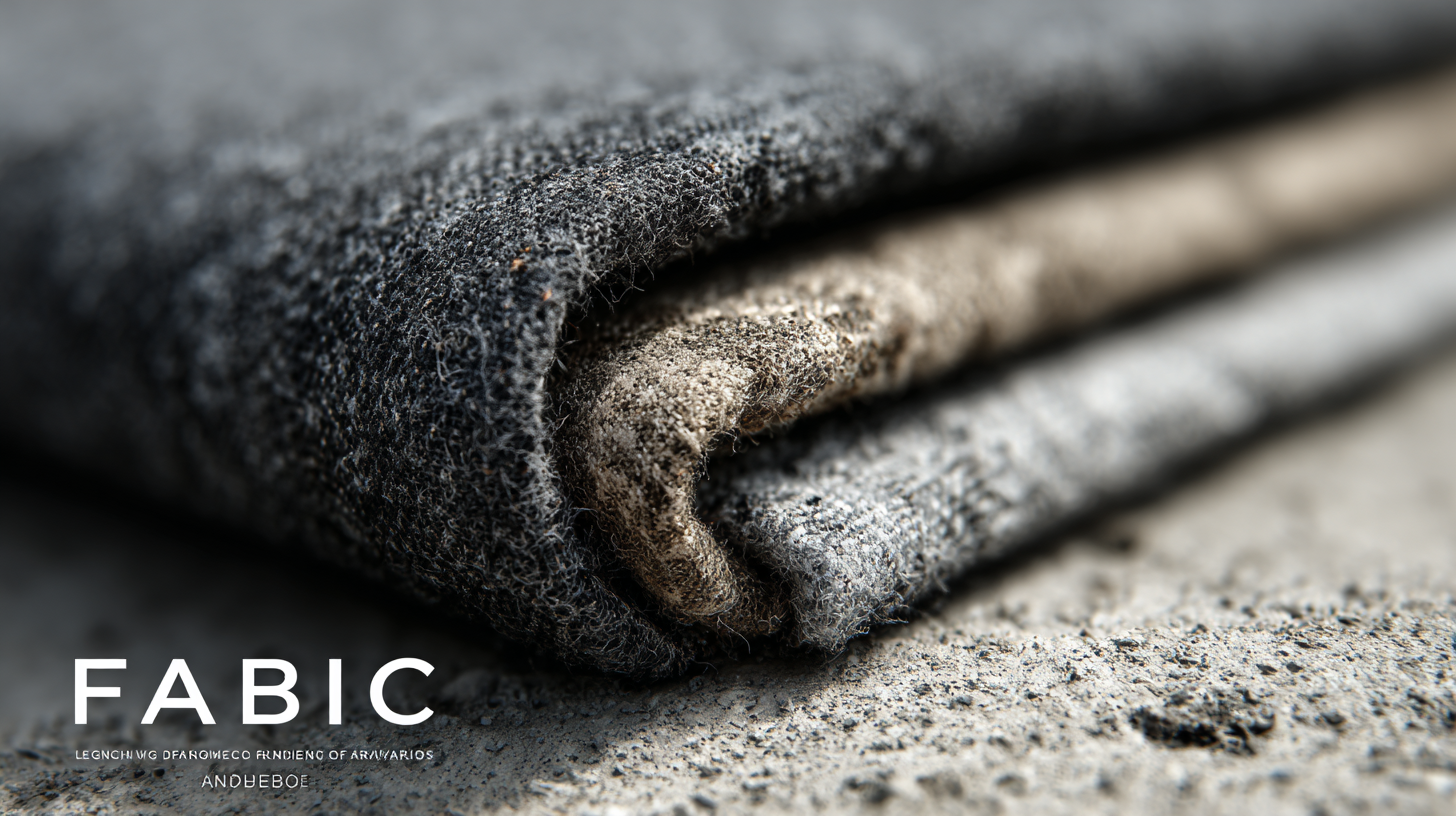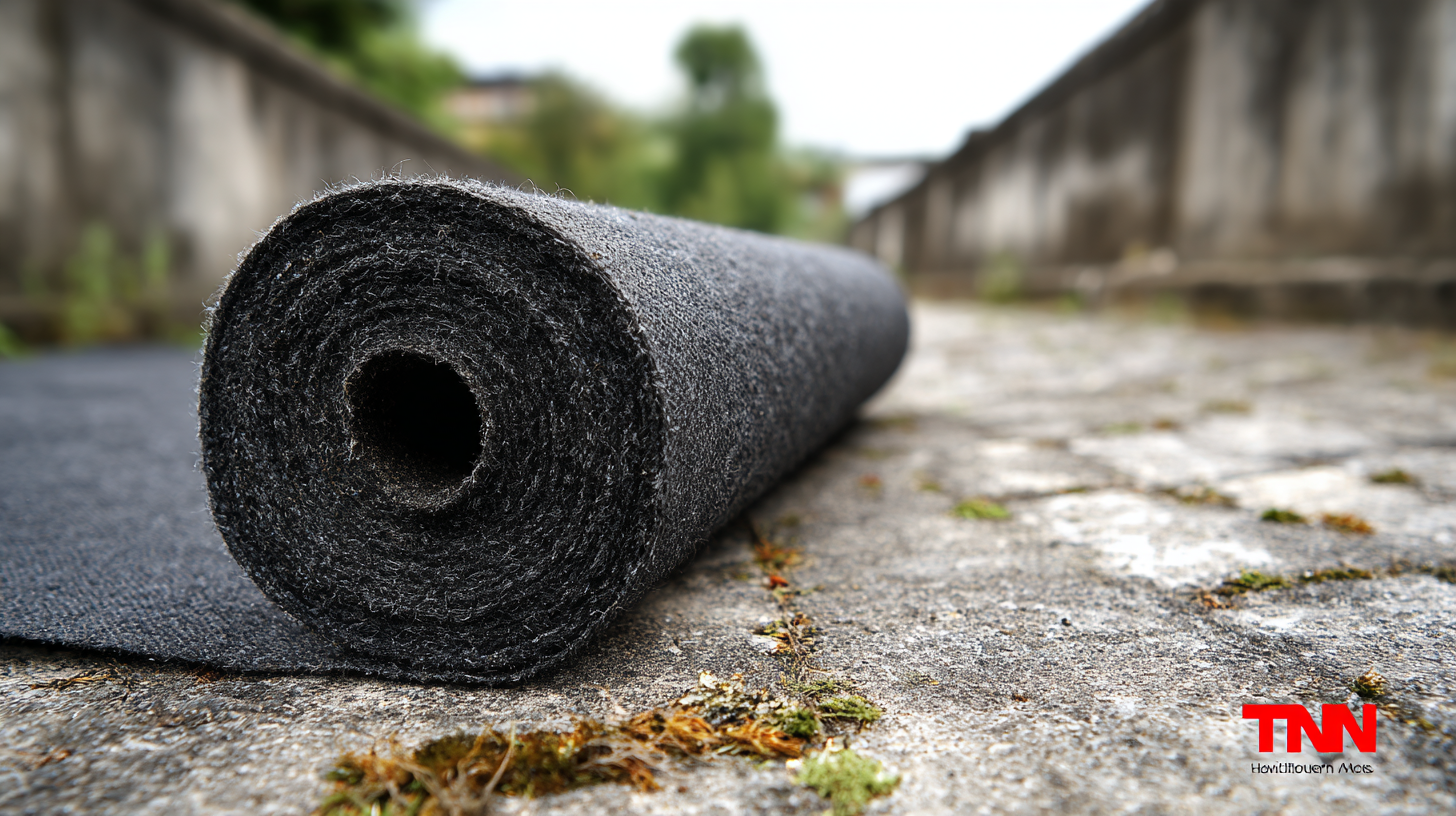Inquiry
Form loading...
- Phone
- E-mail
In the construction and landscaping industry, the use of geosynthetics has significantly transformed conventional practices. Among these, geotextile fabric for driveways stands out as a critical component, providing essential benefits such as erosion control, soil stabilization, and drainage management. According to a report by the Geosynthetic Materials Association, the global geotextile market is projected to reach $12 billion by 2025, driven by increased demand in infrastructural projects and sustainable land development.

Geotextile fabrics not only enhance the durability of driveways but also improve their aesthetic appeal by facilitating proper drainage and minimizing soil movement. This blog aims to explore the unique features and diverse applications of top geotextile fabrics specifically designed for driveways, providing insights into their technical specifications and performance advantages in real-world scenarios.
Emerging innovations in geotextile fabrics present sustainable solutions for driveway construction, addressing both environmental concerns and practical applications. Recent studies indicate that incorporating recycled plastic into geotextile fabrics can reduce landfill waste while providing strong structural support for surfaces like driveways. For instance, reports show that using plastic waste collected from oceans can enhance the durability of driveways, thereby contributing to a circular economy.
As urban areas face challenges from extreme weather events, the integration of advanced water-management techniques through geotextile solutions is increasingly crucial. A surge in the use of permeable geotextiles is being noted, allowing rainwater to infiltrate rather than run off, which can mitigate flooding and reduce strain on stormwater systems. According to a recent sustainability report, environmentally friendly driveways made from innovative geotextiles can also lead to a 25% reduction in water runoff compared to traditional asphalt surfaces. This not only promotes sustainability but also aids in creating aesthetically pleasing and functional outdoor spaces that align with modern ecological standards.
| Geotextile Fabric Type | Material Composition | Primary Application | Unique Features | Sustainability Rating |
|---|---|---|---|---|
| Woven Geotextile | Polypropylene | Driveway stabilization | High tensile strength | Moderate |
| Nonwoven Geotextile | Polyester | Water drainage | Excellent filtration | High |
| Composite Geotextile | Woven and nonwoven | Reinforcement and filtration | Dual-functionality | Very High |
| Geocell | HDPE | Load support | 3D structure for strength | High |
| Geocomposite | Fabric and geomembrane | Containment | Enhanced durability | Very High |
Geotextiles play a crucial role in enhancing the durability and longevity of modern driveways. These innovative materials are designed to provide structural support, improve drainage, and prevent soil erosion, thereby reducing the potential for damage over time. By reinforcing the ground beneath the surface, geotextiles help distribute loads evenly, minimizing the risk of cracks and depressions that can occur from heavy traffic. As driveways face various stresses—from vehicle weight to environmental conditions—integrating geotextiles offers a robust solution to maintain their integrity.
The market for technical textiles, including geotextiles, is witnessing significant growth, projected to soar from $252.80 billion in 2025 to an impressive $391.75 billion in the coming years. This surge indicates a rising awareness of the benefits that geotextiles bring to construction projects, especially in residential and commercial driveways. With applications extending beyond mere driveway construction, these fabrics are utilized in diverse projects such as roadways and bridge abutments, proving their versatility and essential role in advancing modern infrastructure. Utilizing geotextiles in driveways not only enhances performance but also offers a sustainable approach to construction, aligning with contemporary demands for durable and eco-friendly solutions.
 Geotextiles have emerged as a cost-effective alternative to traditional surfacing materials for driveways, demonstrating significant savings in both installation and maintenance. According to a report from the Geosynthetic Institute, the initial costs for geotextile installation can be reduced by up to 25% when compared to concrete or asphalt driveways. This is primarily due to reduced material usage and labor costs associated with lighter, easier-to-handle products. The long-term benefits are equally impressive; geotextiles improve load distribution, which can extend the lifespan of your driveway by several years—an advantage not typically seen with standard surfacing options.
Geotextiles have emerged as a cost-effective alternative to traditional surfacing materials for driveways, demonstrating significant savings in both installation and maintenance. According to a report from the Geosynthetic Institute, the initial costs for geotextile installation can be reduced by up to 25% when compared to concrete or asphalt driveways. This is primarily due to reduced material usage and labor costs associated with lighter, easier-to-handle products. The long-term benefits are equally impressive; geotextiles improve load distribution, which can extend the lifespan of your driveway by several years—an advantage not typically seen with standard surfacing options.
Tips for Choosing Geotextiles: Always consider the specific application and environmental conditions of your location when selecting a geotextile fabric. A non-woven geotextile may be more effective for drainage in wetter climates, while woven fabrics could provide better stability for high-traffic areas. Consulting with professionals can ensure you select a material that maximizes both cost savings and functionality. Additionally, regular inspections and simple maintenance routines can further enhance the longevity of your geotextile driveways, preserving both their appearance and performance.
Geotextile fabrics are increasingly recognized for their numerous environmental benefits, particularly when used in driveway construction. These durable fabrics play a critical role in soil stabilization, helping to prevent erosion and reduce sediment runoff. By acting as a barrier between the driveway surface and the soil beneath, geotextiles allow for proper drainage while simultaneously promoting healthy vegetation. This not only aids in maintaining the structural integrity of the driveway but also supports local ecosystems.

When considering geotextiles for your driveway, here are a few tips to keep in mind. First, choose the appropriate type of geotextile based on your specific soil conditions. Non-woven fabrics are excellent for filtration and separation, while woven varieties offer greater strength and stability for heavy traffic areas. Additionally, always ensure proper installation to maximize their effectiveness; overlapping seams and secure anchoring can significantly enhance performance. Finally, consider using permeable materials along with geotextiles to encourage better water infiltration and reduce runoff, further benefiting the environment.
By integrating geotextile fabrics into your driveway project, you’re not only investing in longevity and durability but also contributing positively to the environment. The advantages they offer, such as erosion control and enhanced drainage, make them an ideal choice for environmentally conscious homeowners looking to reduce their ecological footprint while ensuring a reliable and functional driveway.
Geotextiles play a critical role in urban infrastructure and residential projects, offering innovative solutions for soil stabilization, drainage, and erosion control. According to a report by Grand View Research, the global geotextiles market is expected to reach USD 11.14 billion by 2025, driven by the increasing demand for sustainable and efficient construction methods. In urban areas, geotextile fabrics are commonly used to reinforce driveways, parking lots, and roads, providing a sturdy foundation that enhances longevity and durability.
Moreover, geotextiles are integral in urban drainage systems. They facilitate effective groundwater management by allowing water to pass through while filtering out sediments, thus preventing clogging and promoting sustainable development. The report from Market Research Future indicates that the application of geotextiles in drainage systems can reduce construction costs by up to 25%. In residential projects, homeowners are increasingly opting for geotextile solutions in landscape design, ensuring a stable base for driveways that can withstand the pressures of both vehicles and changing weather conditions. This adoption underscores the growing recognition of geotextiles as a versatile tool in modern construction.
